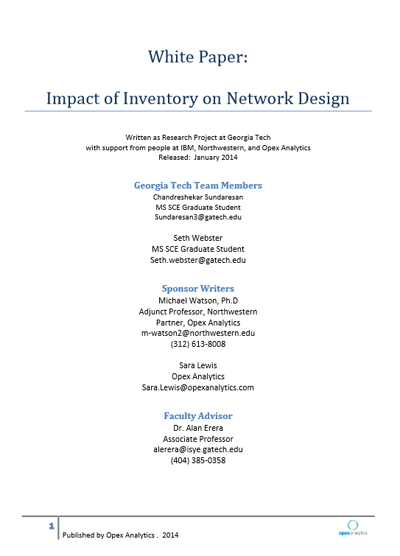Dr. Watson Says: |
 |
| ...In what may be surprising...in many cases you do not need to worry about the inventory costs when designing your supply chain. |
|
What Do You Say?
|
|
|
|
I had the opportunity to work with a team of students at Georgia Tech exploring the relationship between the number of warehouse and inventory.
This is a question that comes up quite a bit when doing network design studies. Mostly, firms are worried that it they increase the number of warehouses they will lose any transportation savings with extra inventory costs.
This idea comes from a rule-of-thumb called the “square root of N rule.” This rule states that the system-wide total safety stock is directly related to the square root of the number of warehouses.
This only tells part of the story. This rule-of-thumb only covers safety stock and not cycle stock.
And, this rule-of-thumb is only meant for the safety stock you hold because of demand variability. It does not cover the impact of lead time variability or even replenishment frequency.

The result of the research was a white paper that we recently released. This white paper shows you examples of how the relationship is more complex than the rule-of-thumb.
In what may be surprising to many people, this white paper shows that in many cases you do not need to worry about the inventory costs when designing your supply chain-- you may still need to worry about inventory, but changing the number of warehouses won’t help your cause.
Previous Columns by
Dr. Watson |
|
|
Also, as you are exploring the impact of inventory, the white paper reminds you to look at the other major drivers of inventory when redesigning your supply chain—cycle stock, order frequency, lead time, and lead time variability. You will need to investigate each of these areas to determine if they will change as you change the structure of your supply chain.
Final Thoughts:
If you involved in a network design study and are interested in how to incorporate inventory, you should check out the white paper. It will give you a good starting point. And, if you have feedback on the paper, we would love to hear it.
|